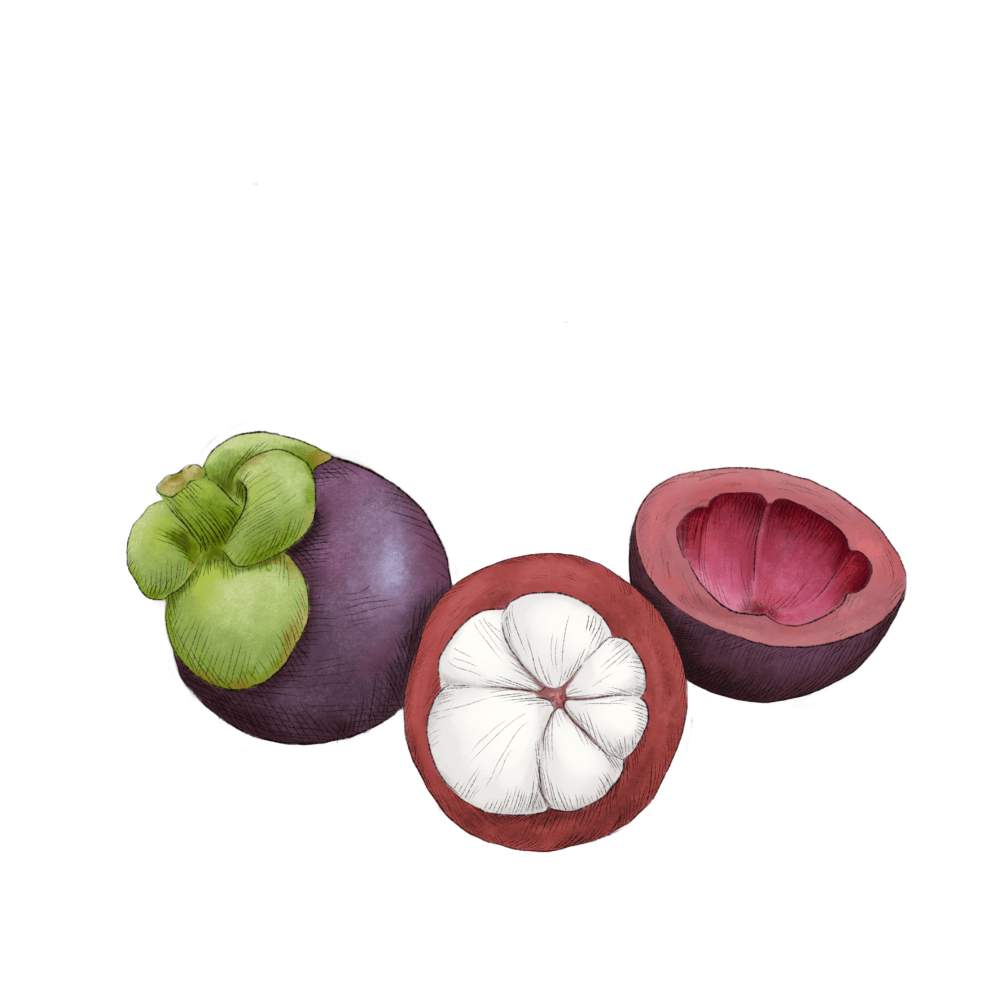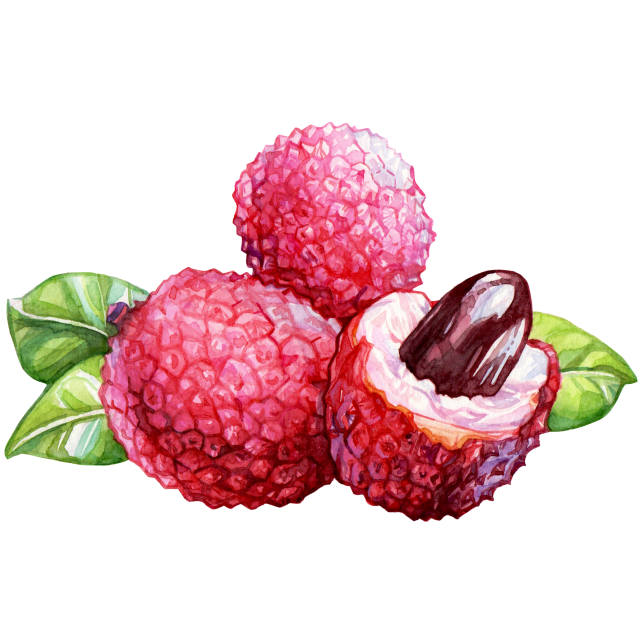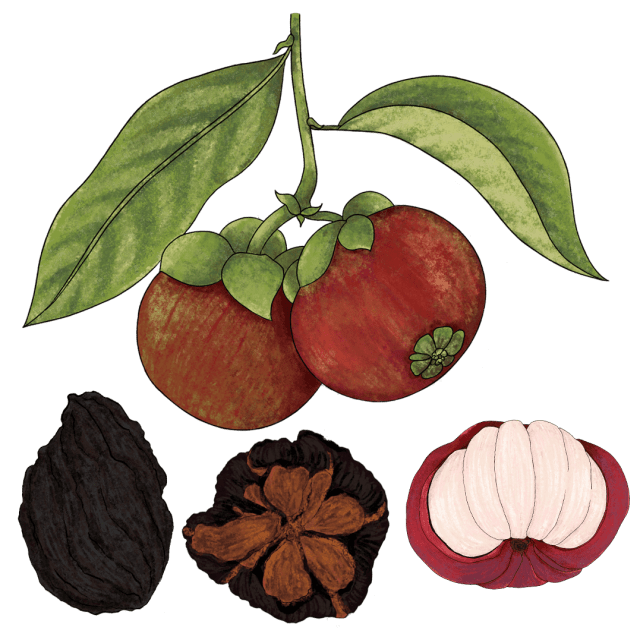Mangosteen

Latin name: Garcinia mangostana
Other names: purple mangosteen
Uses: fruit
What are mangosteens?
Mangosteens are the fruit of a tropical tree. On the outside, they look like a cross between a pomegranate and an eggplant; their insides look like a mandarin that’s had the color drained out.
Why are mangosteens healthy?
Mangosteens contain several powerful compounds, including alpha mangostin, which has antioxidant, antimicrobial, and antitumor properties. Two other xanthones, garcinone and gartanin, show strong anticancer potential. Traditionally, mangosteen raw, or in tea, has been used to treat fever, diarrhea, and diabetes (clinical trials are investigating its effectiveness in this last area). Avoid consuming mangosteen if you’re pregnant, breast feeding, or on blood thinners.
What do mangosteens taste like?
Ripe mangosteens have a wonderfully subtle, sweet-and-sour flavor that’s almost like a tutti-frutti mix of strawberries, pineapple, lychee, and peach; their segments have juicy, white flesh the texture of a plum, and some of them have seeds inside. Green (unripe) mangosteen has a juicy, slightly crisp texture.
How do I use mangosteens?
Mangosteens need to be eaten right away after you get them home, but that doesn’t mean you need to devour them while standing over the sink. Ripe mangosteens are usually used in smoothies, desserts, and fruit salads, but in Southeast Asia, where they grow plentifully, green mangosteens are also used like a vegetable, much like the way green mango and green papaya are combined with peanuts, chiles, shredded carrots, and lime.
What do mangosteens pair well with?
In traditional Chinese medicine mangosteen is used as a cooling foil (yin) to the warmth of yang foods. You can adopt these principles in your flavor pairings too — think of mangosteen as a complement to ginger and turmeric, jackfruit, chile, lime (and makrut lime leaf), pineapple, and coconut. All of these ingredients point to one thing: Thai curry.
Where do mangosteens grow?
Mangosteen is native to the tropics of Southeast Asia but are also grown in Puerto Rico. The trees, which have to be grown from seed in temperatures over 68o F, take a decade to mature enough to produce fruit. This is just one impediment to their commercial production; another is that the fruits don’t continue to ripen after they’re picked.
How to buy mangosteens:
Look for them in Asian markets and better-stocked groceries, and if you’re lucky enough to find some, eat them right away — part of their charm is their elusiveness, owing to their exceedingly short shelf life.
Fun mangosteen fact:
Mangosteens are so difficult to find because of how hard they are to grow, how poorly they ship, and how quickly they go south (because of how easily they bruise). This made them irresistible to fussy Victorians — Queen Victoria herself purportedly offered knighthood to anyone who could bring her one.




